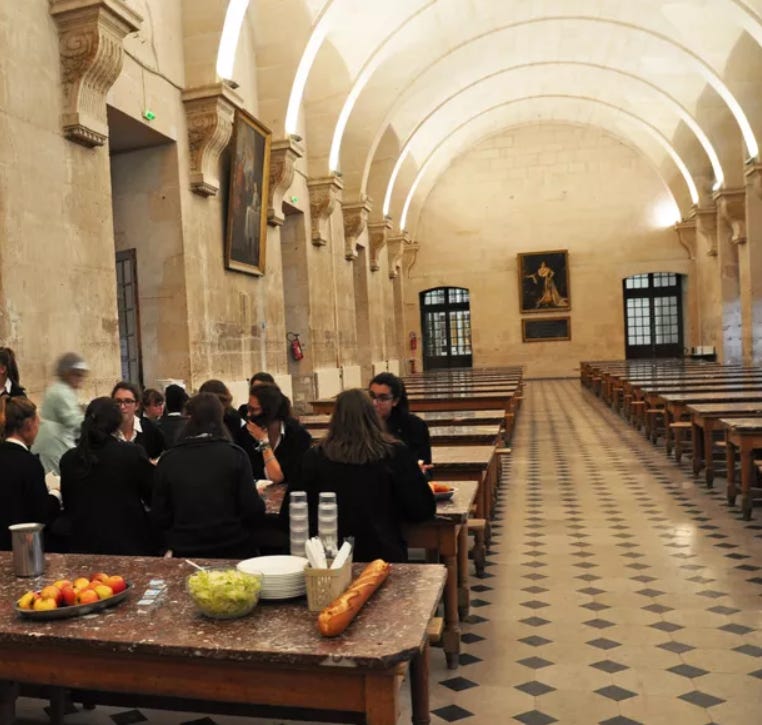Chapters 5 Author Notes
I'm not a Teenaged Girl, French Food of the 1870s, and the Siege of Paris
I have an admission to make. I’m a fifty-four-year-old man who grew up in a small town in Texas. There were no sisters, just me and my brother, who is almost six years older. I have three daughters who were once teenagers, but I didn’t understand them then. Raising them gave me an ulcer but not much insight into my struggles with Chapter 5.
To write a scene about four teenage girlfriends discussing their futures while also trying to introduce the reader to the personalities of Louisa’s friends, I had to channel my inner-seventeen-year-old girl. I think it turned out pretty good in the end, but what do I know?
Now, back to research, which, in the end, drove the flow of dialog in Chapter 5. The scene starts in the Saint Denis refectory (cafeteria). Another admission: I knew what refectory meant, but I had never spoken that word out loud before writing this chapter. Since the St. Denis school was once an abbey, maybe the term is associated with religious buildings.
As you can see from the picture above, nothing much has changed since the Clan of the Dissipated would have enjoyed their matelote—fish stew at the last table on the right with Madame du Bouzet’s portrait keeping watch.
An essential component of any meal scene would be the food served in the St. Denis refectory on a regular day in 1874. In my search, I ran across this great article by a fellow author, Alysa Salzberg, whose book Hearts at Dawn is Beauty and the Beast retelling, set during the Siege of Paris. The article discusses what people were reduced to eating during that time. I haven’t read her book, but her blog, similar to this one, is someplace I’ll look to for future material. After reading her article, I knew the girls needed to mention the siege during lunch.
Some background: The Siege of Paris took place from September 19, 1870, to January 28, 1871. Beyond the Revolution and the Napoleonic wars, the French defeat by the Prussians in 1871, after the Siege of Paris, affected the psyche of the French nation from then until the beginning of the world wars.
Regarding our heroine and her friends, the Siege would have been the most traumatic collective experience in their young lives. To say that the citizens of Paris had to go to great lengths to survive is an understatement. It was so important that I mentioned it in chapter 1. And, yes, my historical research is as disordered as this post.
Back to the original question, what might they have served in the refectory? Research related to Eugénie Savant’s diary suggested that the actual menu was part of the omnipresent rulebook. That little nugget made it into the chapter, but I have yet to see source material (an original rulebook) confirming this detail. Ultimately, I found this article about French cooking terms, leading me to matelote. After confirming that the stew existed in the 1870s the table was set, so to speak.
Fish stew sounds good. ONCE. But, if I had to eat it every week, I think, like Louisa, I might start a food strike in protest. Using the siege and stew as a foil to create tension between Eugénie and Louisa and later between Eugénie and Marie helped move the conversation along until I got to unleash Marie’s bomb of a decision to become a nun.
Overall, I’m proud of this chapter, and as the girls are in more scenes, I’m enjoying getting to know my inner Gaiety, Pleasure, and Joy.


